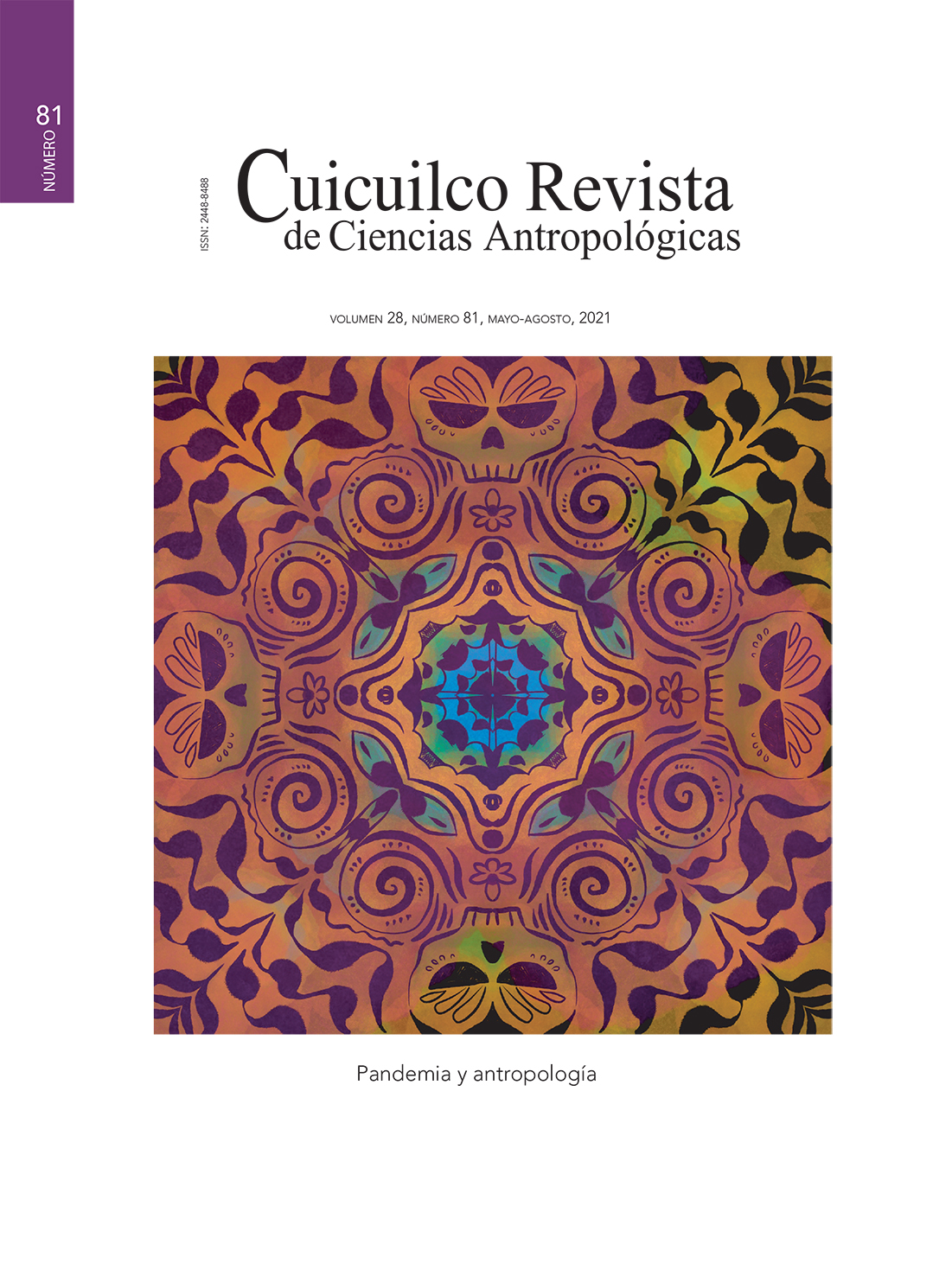El mundo simbólico de los jades Liangzhu en China
Palabras clave:
Edad de Jade, cultura Liangzhu, economía ritual, chamanismo, estado arcaico.Resumen
Gracias a sus extraordinarias cualidades materiales y espirituales, en la China antigua los jades eran valorados como una materia sagrada (shenwu). En las últimas décadas se han descubierto gran cantidad de objetos de jade en una serie de culturas neolíticas tardías y terminales, las cuales ahora se consideran como parte de una era distintiva conocida como Edad del Jade; ello pese a que los sofisticados artefactos lapidarios corresponden principalmente a las categorías de jades suntuarios y rituales, usados en entierros lujosos de la élite como marcadores del rango social y parafernalia ceremonial en rituales chamánicos. En este trabajo resaltamos el patrón de consumo mágico-religioso de los jades en la cultura Liangzhu del sur de China y su importancia respecto del origen del tradicional sistema ritual como base del ethos de la civilización china y de la formación de una entidad sociopolítica compleja temprana con marcados tintes teocráticos que colapsó a finales de la Edad del Jade.
Descargas
Citas
Baines, Joseph y Norman Yoffee. 1998 Order, legitimacy and wealth in ancient Egypt and Mesopotamia, en Archaic states, Garry Feinman y Joyce Marcus (eds.). School of American Research. Santa Fe: 199-260. 2018 Analyzing order, legitimacy and wealth in ancient Egypt and Mesopotamia, en Shijie Lishi Pinglun (World Historical Review). En prensa. Shanghai.
Bell, Catherine. 1992 Ritual theory, ritual practice. Oxford University Press. Oxford. 1997 Ritual perspectives and ritual dimensions. Oxford University Press. Oxford.
Blanton, Richard et al. 1996 A dual-processual theory for the evolution of Mesoamerican civilization. Current Anthropology, 37 (19): 1-14.
Chang, K.C. 1986 Art, myth and ritual: the path to political authority in China. Cambridge University Press. Cambridge. 1989 An essay on Cong. Orientations, 20 (6): 7-43. 1994 Ritual and power, en Cradles of civilization: China, ancient culture, modern land, Robert E. Murowchick (ed.) University of Oklahoma Press. Norman: 61-69.
Childs-Johnson, Elizabeth. 2005 [1988] Dragons, masks, axes and blades from four newly-documented jade-working cultures of ancient China. Chinese jade. Selected articles from Orientations 1983-2003. Orientations. Hongkong: 50-61.
Childs-Johnson, Elizabeth y Gu Fang. 2009 The art of working Jade and the rise of civilization in China, en Yuqi Shidai. The Jade Age. Early Chinese jades in American Museums. Sciencepress. Beijing: 291-425.
Comisión de Administración de Reliquias Culturales de Shanghai. 2000 Fuquanshan-Xinshiqi Shidai YIzhi Fajue Baogao (Reporte de Excavaciones del Sitio Neolítico de Fuquanshan), Huang Yi Pei (ed). Wenwu Chubanshe. Beijing.
DeMarrais, Elizabeth, Luis Jaime Castillo y Timothy Earle. 1996 Ideology, materialization and power strategies. Current Anthropology (7): 15-31.
Demattè, Paola. 2006 The Chinese Jade Age: between antiquarianism and archaeology. Journal of Social Archaeology (6): 202-226.
Fogelin, Lars. 2007 The archaeology of religious ritual. Annual Review of Anthropology (36): 36-55.
García Rubio de Ycaza, Tansis Darién. 2019 A preliminary evaluation of the term ‘Jade Age’ from an archaeological evidence: based on the Late Neolithic archaeological remains in the Yangtze river region, tesis de maestría (en chino). Universidad de Zhejiang. Hangzhou, China.
Guo, Dashun. 2004 Jade age existed in China 5 000 years ago. http://www.china.org.cn/english/culture/88478.htm Consultada el 30 de noviembre de 2010.
Huang Tsui-Mei. 1992a Liangzhu —a Late Neolithic jade— yielding culture in southeastern coastal China. Antiquity (66): 75-83. 1992b The role of jade in the Late Neolithic culture of Ancient China: The case of Liangzhu, tesis de doctorado. Universidad de Pittsburgh. Pittsburgh.
Huang Xuanpei. 2005 [1991] Liangzhu jades in the Shanghai Museum. Chinese jade. Selected articles from Orientations 1983-2003. Orientations. Hongkong: 90-94.
Inomata, Takeshi y L.S. Cohen (eds.). 2006 Archaeology of performance: theaters of power, community, and politics. Walnut Creek. Altamira.
Instituto de Investigación de Bienes Culturales y Arqueología de la Provincia de Anhui. 2009 New discoveries in the fifth excavation of the Liangjiatan site in Hanshan county, Anhui. Chinese Archaeology (9): 63-73.
Instituto de Investigación de Bienes Culturales y Arqueología de la Provincia de Zhejiang. 2008 Yuhangshichu Hangqu Liangzhu gucheng yizhi 2006-2007 nian de fajue (Excavaciones de los años 2006-2007 en la antigua ciudad de Liangzhu en el municipio de Yuhang del municipio de Hangzhou). Kaogu (7): 3-10. 2019 Liangzhu Gucheng Zonghe Yanjiu Baogao (Reporte General de las Investigaciones en la Ciudad Antigua de Liangzhu). Wenwu Chubanshe. Beijing
James, Jean M. 2005 [1991] Images of power: masks of the Liangzhu culture. Chinese jade. Selected articles from Orientations 1983-2003. Orientations. Hongkong: 101-110.
Jiang, Weidong. 2013 Yuqi de gushi (Historia de jades). Editorial de Hangzhou. Hangzhou.
Kaogu. 2002 Ershiqi Zhongguo Baijian Kaogu Faxian (100 major archaeological discoveries in the 20th century in China). Publicaciones de la Revista de Arqueología Kaogu, China Social Sciences Press. Beijing.
Kyriakidis, Evangelos (ed.) 2007 The archaeology of ritual. Cotsen Institute of Archaeology, University of California. Los Angeles.
Liu, Bin. 2009 Discovery and preliminary study to the Liangzhu Culture. Chinese Archaeology (9): 19-22.
Shenwu shijie (Un mundo chamánico). Editorial de Hangzhou. Hangzhou.
Liu, Li. 2003 The products of minds as well as of hands: production of prestige goods in the Neolithic and Early State Periods of China. Asian Perspectives, 42 (1): 1-19.
Lu, P. J. et al. 2005 The earliest use of corundum and diamond in Prehistoric China. Archaeometry, 47 (1): 1-12.
Major, John S. y Constance A. Cook. 2017 Ancient China. A History. Routledge. Nueva York y Londres.
Middleton, Andrew e Ian Freestone. 1995 The mineralogy and occurrence of Jade, en Chinese jade from the Neolithic to the Qing, Jessica Rawson (ed.). The British Museum Press. Londres: 413-423.
Mou, Yongkang. 1997 An archaeological investigation into the function of jade Bi and Cong, en Chinese jade, Rosemary Scott (ed.). Percival David Foundation of Chinese Art. Londres: 63-75.
Mou Yongkang y Wu Ruzuo. 1999 A discussion on the Jade Age, en Exploring China’s past. New discoveries and studies in archaeology and art, Roderick Whitfield y Wang Tao (trad. y eds.). International Series in Chinese Art and Archaeology, 1, Saffron. Londres: 41-44.
Murphey, Joanne M.A.. 2016 Ritual and archaic state. University of Florida Press, Florida.
Robb, John E. 1998 The archaeology of symbols. Annual Review of Anthropology (27): 329-346.
Qin, Ling. 2013 The Liangzhu culture, en A companion to Chinese archaeology, Anne Underhill (ed.). Willey-Blackwell. Oxford: 574-596.
Rawson, Jessica. 1995 Chinese jade from the Neolithic to the Qing. Museo Británico. Londres. 1998 Commanding the spirits: control through Bronze and Jade, en Chinese Bronzes. Selected articles from Orientation 1983-2000. Orientations. Hongkong: 288-300.
Sax, Margaret, Niguel D. Meeks y Andrew P. Middleton. 2004 The identification of carving techniques on chinese jades. Journal of Archaeological Science (31): 1413-1428.
Spielmann, Katherine. 1998 Ritual craft specialists in middle range societies, en Craft and social identity, Cathy L. Costin y Rita Wright (eds.). Archaeological Papers 8, American Archaeological Association. Washington: 153-159.
Swenson, Edward. 2015 The archaeology of ritual. Annual Review of Anthropology (44): 329-345.
Teng, Shu-ping. 1997 A theory of the three origins of Jade culture in ancient China, en Chinese jade, Rosemary Scott (ed.). Percival Foundation of Chinese Art. Londres: 9-24.
Thorp, Robert L.. 2005 China in the early Bronze Age. Shang civilization. University of Pennsylvania Press. Philadelphia.
Wang, Mi. 2018 Resource and social identity: jade usage in the Neolithic Liangzhu culture, China, and the modern display and uses of Liangzhu jade artifacts, tesis de maestría, Graduate School of Arts and Sciences, Universidad de Boston.
Wang, Mingda. 1997 A study of jades of the Liangzhu culture, en Chinese Jade, Rosemary Scott (ed.). Percival Foundation of Chinese Art. Londres: 9-24.
Wells, Christian E.. 2006 Recent trends in theorizing prehispanic mesoamerican economies. Journal of Archaeological Research (14): 265-312.
Wen, Guang y Zhichun Jing. 1992 Chinese Neolithic Jades: A Preliminary Geoarchaeological Study. Geoarchaeology 7 (3): 251-275.
Wiesheu, Walburga. 2005 Espíritus borrachos y alter-egos: el chamanismo en la religión temprana de China, en Arqueología y Antropología de las Religiones, Patricia Fournier y Walburga Wiesheu (coords.). ENAH. México: 249-272. 2010a Culturas tempranas del jade en China y Mesoamérica: Economía de una piedra ‘preciosa’ en las etapas formativas de su desarrollo, en La Nueva Nao: de Formosa a América Latina. Lucía Chen y Alberto Saladino García (coords.). Universidad de Tamkang. Taipei: 371-389. 2010b La orientación chamánica de la religión temprana en China, en Antología de textos del Diplomado teoría e historia de las religiones II, Carmen Valverde Valdés y Mauricio Ruiz Velasco (coords.). UNAM. México: 137-157. 2011 Cambios climáticos globales y trayectorias culturales en la transición del Neolítico a la Edad del Bronce en China, en Perspectivas de la investigación arqueológica, IV, Walburga Wiesheu y Patricia Fournier (coords.). ENAH, Conacyt. México: 79-105. 2012a La reintroducción de una noción antigua: ¿existió una Edad del Jade en la trayectoria cultural del surgimiento de la civilización china?, en Temas de Historia de China, Romer Cormejo (ed.). El Colegio de México. México: 19-64. 2012b Culturas tempranas e industria lapidarias en el Neolítico Terminal en China, en El jade y otras piedras verdes. Perspectivas interdisciplinarias e interculturales, Walburga, Wiesheu y Gabriela Guzzy (coords.). INAH. México: 259-304. 2012c Tesoros antiguos del jade en China y Mesoamérica, en Piedras del Cielo. Antiguas civilizaciones del jade, catálogo de exposición. INAH. México: 7-13. 2014 Esquemas de economía ritual y estrategias de liderazgo en sociedades complejas tempranas, en Perspectivas de la investigación arqueológica VI, Patricia Fournier y Walburga Wiesheu (coords.). Conaculta, INAH, ENAH. México: 41-68. 2019 Leadership strategies and ritual economy in early complex societies in China. Oriens Antiquus (1): 181-190.
Wiesheu, Walburga y Xingcan Chen. 2008 El paso a la vida eterna. Usos del jade en las prácticas funerarias de las dinastías Zhou a Han en China, en Ritos de paso. Arqueología y antropología de las religiones III, Patricia Fournier, Carlos Mondragón y Walburga Wiesheu (coords.). ENAH, Promep. México: 81-101.
Wu, Ruzuo y Xu Jijin. 2009 Liangzhu wenhua xingluoshi (The rise and fall of Liangzhu culture). Social Science Press. Beijing.
Yang, Boda. 2004 Shilun xianyuqi gongyi ji yuqi gongyi zhi qubie yu tedian (Sobre los rasgos distintivos de las tecnologías del trabajo prejade y jade), Kaogu (10): 62-68. 2009 Zhongguo yuqi quanji (Compendio de jades de China), 1. Arte de Hebei. Shijiazhuang.
Yu, Ming. 2009 Chinese jade. sacred, imperial and civil forms. China Intercontinental Press. Beijing.
Zhou, Qingwu. 2004 Zhongguo 5 000 nian wenming diyi zheng. Liangzhu wenhua yu Liangzhu guguo (The first evidence of the 5 000 years of civilization of China), Liangzhu culture and early state of Liangzhu. Universidad de Zhejiang. Hangzhou.
Publicado
Versiones
- 2022-02-13 (2)
- 2021-09-30 (1)







